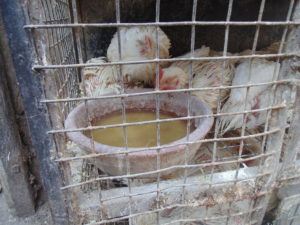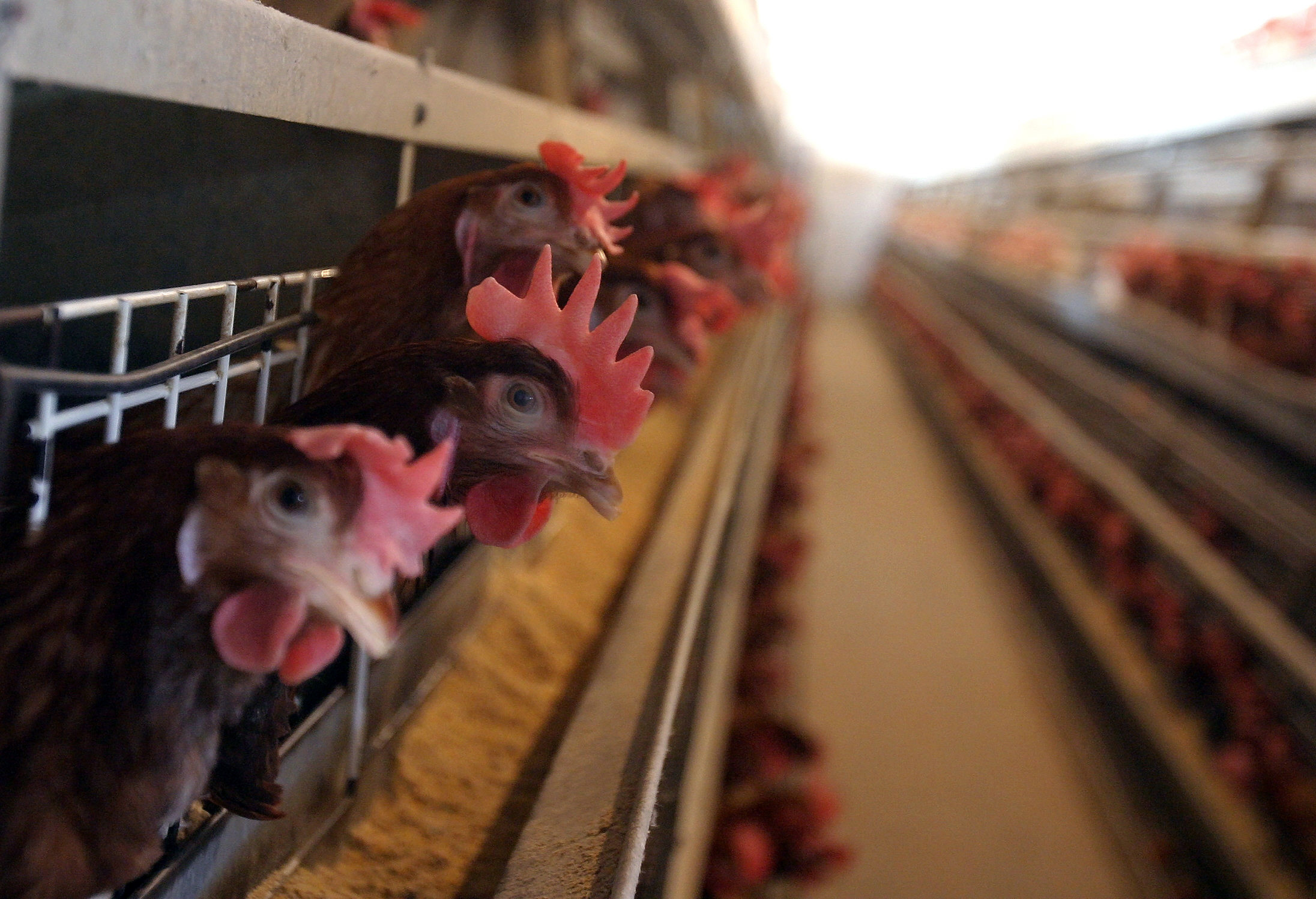As the consumption of poultry products grows by the day, we need to look into how hens are being treated in cages the size of an A4 sheet
At 16 weeks, they are ready to lay eggs. At 72 weeks, they are disposed of. Trait selected chicks yield 320 to 360 eggs a year, while a red jungle fowl — the predecessor — would have given just 18-20 eggs a year.
As they sit and lay eggs for human consumption, we have been unable to ensure that in their short life span they at least have space for movement and to indulge in their natural behaviour of nesting and perching, amongst others.
According to the United Nations’ Food and Agriculture Organisation (FAO), India is the third largest producer of eggs in the world. Another report from 2017 shows that the per capita consumption of eggs has gone up from 30 per annum to 68 per annum, and that of chicken from 400g per annum to 2.5 kg per annum in the last five years.
With growing consumption, one must think about the way in which we use hens for our daily needs and how we treat this source.
Instead, egg-laying hens are subjected to cramped floor space of approximately 450 cm2 (less than an A4 size sheet) in what are called battery cages. Unable to spread their wings, they are left to sit in one spot, building protein in completely unnatural surroundings.
This practice affects 46 crore hens who suffer in barren, wire mesh called battery cages, according to the Humane Society International/India (HSI India). This is a clear violation of Prevention of Cruelty to Animals Act, Section 11(1)(e) which states that no animal can be confined to a receptacle (or cage), “which does not measure sufficiently in height, length and breadth to permit the animal a reasonable opportunity for movement”.
The matter is now in court. The Federation of Indian Animal Protection Organisations (FIAPO) and People for Animals (Hyderabad and Secunderabad) are petitioning for a verdict in the favour of millions of chickens.
Shreya Paropkari, HIS India’s campaign manager, said that the Delhi High Court on April 10 has taken note of all the issues and directed the Ministry of Environment, Forest and Climate Change to draft rules according to the Law Commission of India’s recommendations in 10 days.
This will then be presented in a public forum for comments. With the feedback compiled, it will be taken back to court, which will hear the case again on July 16.
Paropkari points out that six to seven companies, including Venkateshwar Hatcheries, better known as Venky’s, and the National Egg Coordination Committee (NECC), monopolise the sector.
“They don’t want the chickens to have larger space because then they will consume more feed. They will be using more energy when they have space to walk around,” this, she says is the only reason why these companies stand against the idea of more freedom to the chickens.
Instead, the most important aspect for these companies remain: what they feed the hens and how little they can get away with feeding them.
These organisations also make profit, she says, from making farmers join the trade as they supply the feed along with everything else. As NECC also declares the prices of the egg, all the power lies with them.
Egg prices are pegged at Rs 5 per egg, and Paropkari says that this is achieved by having low labour costs, no waste disposal system and low cleanliness.
Birds are kept at a height so that their droppings fall into the centre of the room. This is not cleaned for a year, which is not just terrible for the labourers working there, but the birds themselves who have to inhale the ammonia.
“Through animal cruelty, people pay less for their eggs,” she says. To end this cruel exploitation, the recommendations that have been made see that the system is commercially viable, while also keeping in mind the condition in which the birds live.
Paropkari points out, the companies only care for their yield. Chickens are always picked in a pack, so if there are 20,000 birds in one area, they would have all come together. The daily required output for such a batch would be 17,000 eggs a day. Once the number goes down to 15,000, they are culled.
But the defendants, which includes the government, Paropkari says, maintain that they oppose a new system not because of the costs they would incur but because it would make eggs costlier. The government avers that eggs being a source of protein for the poor man of the county should remain at a low cost. The petitioners don’t buy this argument, however, as Paropkari says that most malnourished are living in rural areas “and 70% of the eggs sold are in urban areas”.
For now, the future for the egg-laying hens will be a little happier if the petition is taken into due consideration and draft rules are truly affective. Implementation, then, would be the next problem to tackle.
Cramped conditions

When we speak about egg-laying hens, a thought must go out to those that sit in cramped cages waiting for hands to go in and yank them out to be killed.
A meat shop owner in Daryaganj said that he didn’t have a problem with bigger cages but he didn’t have space for it. “I can even cull them and keep them in the fridge so that they don’t have to just sit there, but customers want chicken freshly killed in front of them.”
The broilers that he acquires come from Ghazipur Murga Mandi. When the birds reach adult size at the age of 40 days, they are sold for consumption.





